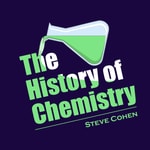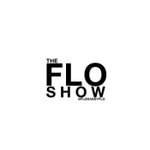The History of Chemistry – Details, episodes & analysis
Podcast details
Technical and general information from the podcast's RSS feed.

The History of Chemistry
Steve Cohen
Frequency: 1 episode/7d. Total Eps: 181

Recent rankings
Latest chart positions across Apple Podcasts and Spotify rankings.
Apple Podcasts
🇨🇦 Canada - chemistry
30/07/2025#12🇬🇧 Great Britain - chemistry
30/07/2025#2🇩🇪 Germany - chemistry
30/07/2025#20🇺🇸 USA - chemistry
30/07/2025#4🇫🇷 France - chemistry
30/07/2025#27🇨🇦 Canada - chemistry
29/07/2025#12🇬🇧 Great Britain - chemistry
29/07/2025#1🇩🇪 Germany - chemistry
29/07/2025#16🇺🇸 USA - chemistry
29/07/2025#12🇫🇷 France - chemistry
29/07/2025#28
Spotify
No recent rankings available
Shared links between episodes and podcasts
Links found in episode descriptions and other podcasts that share them.
See allRSS feed quality and score
Technical evaluation of the podcast's RSS feed quality and structure.
See allScore global : 73%
Publication history
Monthly episode publishing history over the past years.
135: Bond, Chemical Bond
Episode 135
dimanche 25 août 2024 • Duration 22:42
In which we consider what, really, is a chemical bond. Lewis and Langmuir promoted the idea that bonding was sharing of electron pairs. Then we hear about Slater, Hellman, and Ruedenberg's discussion of how covalent bonding works. Kossel and Lewis also introduced ionic bonding. Finally Drude and Lorentz offered metallic bonding. But there are more chemical bonds: the hydrogen bond, the halogen bond, the mechanical bond, the van der Waals force, multi-center bonds, and metallophilic bonds.
- Support my podcast at https://www.patreon.com/thehistoryofchemistry
- Tell me how your life relates to chemistry! E-mail me at [email protected]
- Get my book, O Mg! How Chemistry Came to Be, from World Scientific Publishing, https://www.worldscientific.com/worldscibooks/10.1142/12670#t=aboutBook
134: Atto-boy!
Episode 134
dimanche 18 août 2024 • Duration 19:27
In which we talk about the fastest spectroscopy yet, attosecond spectroscopy, which can resolve electrons moving around atoms. The topic begins with Christian Spielmann in 1997, working to get shorter and shorter laser pulses, and continues with Ferenc Krausz. We discuss what you might be able to inspect using these short light pulses, such as how the shape of atomic orbitals oscillates after ionization, how you can change the opacity of a substance for a brief moment, and fluctuations of water structure.
- Support my podcast at https://www.patreon.com/thehistoryofchemistry
- Tell me how your life relates to chemistry! E-mail me at [email protected]
- Get my book, O Mg! How Chemistry Came to Be, from World Scientific Publishing, https://www.worldscientific.com/worldscibooks/10.1142/12670#t=aboutBook
125: Das Model
Episode 125
dimanche 16 juin 2024 • Duration 23:29
Here we discuss all sorts of kits chemists use to build models of different molecules. We start with the pre-molecule set built for John Dalton, and then we hear of August von Hofmann's set for lecture demonstrations. We talk of John Dewar's brass constructions, and then to Tinkertoy-like setups in the 20th century. Plastic first appears in molecular-model kits by the 1950s, and we continue through the later 20th-century. If you become a Patreon subscriber, you may download a supplemental sheet which shows some 20th-century kits, including a lecture demonstration kit I don't discuss in this episode!
- Support my podcast at https://www.patreon.com/thehistoryofchemistry
- Tell me how your life relates to chemistry! E-mail me at [email protected]
- Get my book, O Mg! How Chemistry Came to Be, from World Scientific Publishing, https://www.worldscientific.com/worldscibooks/10.1142/12670#t=aboutBook
35: Au Pair
Episode 35
mercredi 26 octobre 2022 • Duration 24:34
We learn of the various quantum numbers that describe the size and shape of the energy levels that electrons have inside atoms. Then Louis de Broglie proposes that, just as light has particle characteristics, matter (including electrons) have wave characteristics, which Davisson, Germer, and Thomson show is true. From this, we find that electron waves can fit around atoms only in certain energies. Heitler and London model the smallest molecule, dihydrogen, using quantum-mechanical principles. Linus Pauling takes some general ideas from quantum mechanics, and applies them to chemical bonding.
- Support my podcast at https://www.patreon.com/thehistoryofchemistry
- Tell me how your life relates to chemistry! E-mail me at [email protected]
- Get my book, O Mg! How Chemistry Came to Be, from World Scientific Publishing, https://www.worldscientific.com/worldscibooks/10.1142/12670#t=aboutBook
34: Plastic Fantastic
Episode 34
jeudi 20 octobre 2022 • Duration 21:26
This episode introduces us to the first attempts at "plastic materials" in the 19th century, from vulcanized rubber by Charles Goodyear and Thomas Hancock, to Alexander Parkes's "Parkesine", the first synthetic polymer. Later polymers of the Victorian era include Celluloid, rayon, photographic film and the rise of easy photography, the mostly forgotten charmer of the Art Deco word called galalith, Bakelite, and cellulose acetate--also called Celanese. Among the chemists we meet are John Hyatt, George Eastman, Louis Bernigaud, Wilhelm Krische, and Leo Baekeland, and Camille and Henri Dreyfus. But even with these developments, chemists still weren't sure what a polymer really is.
- Support my podcast at https://www.patreon.com/thehistoryofchemistry
- Tell me how your life relates to chemistry! E-mail me at [email protected]
- Get my book, O Mg! How Chemistry Came to Be, from World Scientific Publishing, https://www.worldscientific.com/worldscibooks/10.1142/12670#t=aboutBook
33: I Want a New Drug
Episode 33
vendredi 14 octobre 2022 • Duration 22:08
We learn about the successes in finding structures for biochemical compounds like chlorophyll, steroidal molecules and bile acids, cholesterol, vitamin D, and bufotoxin. Other vitamins which were analyzed were vitamin A and vitamin B6. B6 has a pyridine structure. Chemists came to understand terpenes, found in places like pine trees. The blood molecule hemin has a similar structure to chlorophyll. Alkaloids and then the building blocks of DNA, the bases, were given structures.
As for drugs, we learn of salvarsan, sulfanilamide, penicillin, and finally protein. Its amino acids were found in the early 1900s, but the full structures of various proteins were not confirmed as yet.
Patreon supporters can view a supplemental sheet showing molecular structures of some of the compounds I mention in this episode.
- Support my podcast at https://www.patreon.com/thehistoryofchemistry
- Tell me how your life relates to chemistry! E-mail me at [email protected]
- Get my book, O Mg! How Chemistry Came to Be, from World Scientific Publishing, https://www.worldscientific.com/worldscibooks/10.1142/12670#t=aboutBook
32: Shell Game
Episode 32
dimanche 9 octobre 2022 • Duration 22:42
Charles Barkla realized how electrons arrange themselves in shells around atoms. Gilbert Lewis noted how electrons can pair up and form bonds, without (much) regard for willingness to give up or accept other electrons to complete shells. We discuss polarity of molecules. Irving Langmuir promoted and expanded Lewis's ideas, adding that atoms like to form octets. Finally, we discuss various models of acidity and basicity.
- Support my podcast at https://www.patreon.com/thehistoryofchemistry
- Tell me how your life relates to chemistry! E-mail me at [email protected]
- Get my book, O Mg! How Chemistry Came to Be, from World Scientific Publishing, https://www.worldscientific.com/worldscibooks/10.1142/12670#t=aboutBook
31: What's Inside
Episode 31
lundi 3 octobre 2022 • Duration 26:13
Ernest Rutherford discovered the basic structure of the atom. Then Max von Laue suggested diffracting x rays through crystalline layers and showed that atoms have a particular arrangement in crystals. Henry Moseley found a relationship between scattered x rays off elements and the positive charge in their nucleus, thus explaining the Periodic Table. Then Max Plank upended science with his "quantum theory". Niels Bohr used quantum theory to posit electron levels in atoms.
- Support my podcast at https://www.patreon.com/thehistoryofchemistry
- Tell me how your life relates to chemistry! E-mail me at [email protected]
- Get my book, O Mg! How Chemistry Came to Be, from World Scientific Publishing, https://www.worldscientific.com/worldscibooks/10.1142/12670#t=aboutBook
30: X ray Vision
Episode 30
mercredi 28 septembre 2022 • Duration 23:42
Wilhelm Konrad Röntgen made an earth-shattering discovery for chemistry and atoms in 1895: He discovered x rays. Then, soon after, Henri Becquerel took the idea of x rays a step further and made another, equally earth-shattering discovery for chemistry and atoms: radioactivity. The Curies figured out which known elements were radioactive. Rutherford categorized radioactive rays into alpha, beta, and gamma. We explore what these rays are. We end up with the discovery of the neutron.
- Support my podcast at https://www.patreon.com/thehistoryofchemistry
- Tell me how your life relates to chemistry! E-mail me at [email protected]
- Get my book, O Mg! How Chemistry Came to Be, from World Scientific Publishing, https://www.worldscientific.com/worldscibooks/10.1142/12670#t=aboutBook
29: Electrons
Episode 29
mercredi 21 septembre 2022 • Duration 23:30
We finally reach the discovery of electrons. The path starts with experiments on electricity in small vacuum vessels and vacuum pumps, improved by Heinrich Geissler, further improved by William Crookes, and then proving that their mysterious cathode rays were matter, not light, responding to electric and magnetic fields and possessing a mass, as J.J. Thomson showed. Robert Millikan determined the actual mass of the electron. We hear about Thomas Edison's strange electrical effect, and Heinrich Hertz's photoelectric effect. Finally we end with a variety of possible models attempting to explain the structure of atoms.
- Support my podcast at https://www.patreon.com/thehistoryofchemistry
- Tell me how your life relates to chemistry! E-mail me at [email protected]
- Get my book, O Mg! How Chemistry Came to Be, from World Scientific Publishing, https://www.worldscientific.com/worldscibooks/10.1142/12670#t=aboutBook

